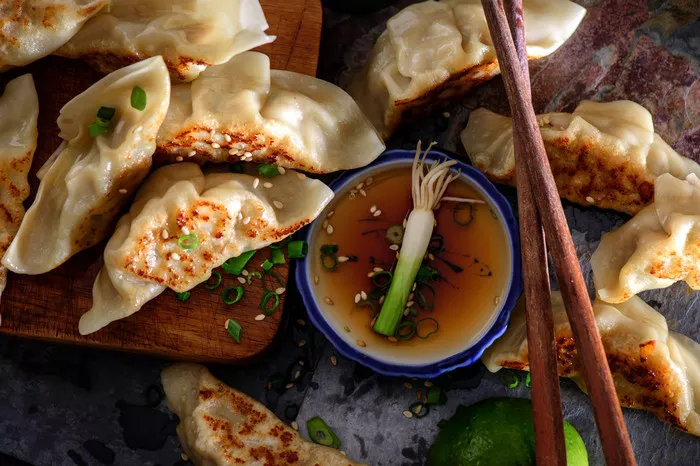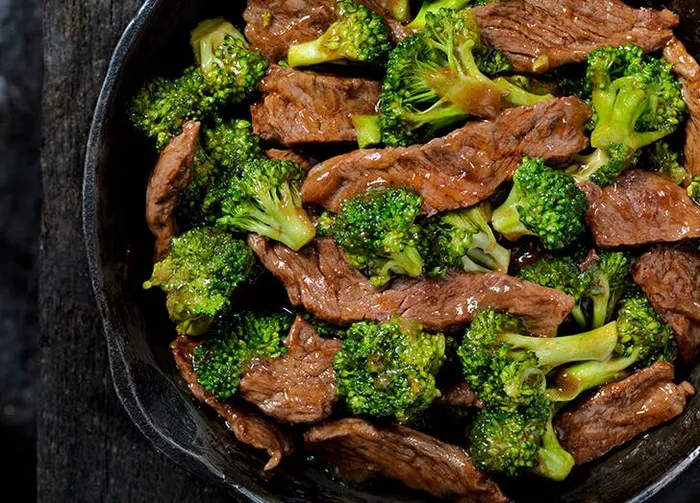Chinese cuisine is renowned for its intricate flavors, harmonious combinations, and diverse array of sauces. These sauces are the secret behind the mouthwatering dishes that have captured the hearts and palates of people around the world. From rich and savory to sweet and tangy, Chinese sauces play a pivotal role in elevating the taste of various dishes. Let’s delve into the world of Chinese cuisine and uncover the many types of Chinese sauces that contribute to its culinary tapestry.
1. Soy Sauce: The Essence of Umami
Soy sauce is perhaps the most iconic of all Chinese sauces. With its deep, savory flavor known as umami, soy sauce serves as the foundation for many Chinese dishes. Made from fermented soybeans, this versatile sauce comes in various types, including light soy sauce, dark soy sauce, and mushroom soy sauce. Light soy sauce is saltier and thinner, while dark soy sauce is thicker and imparts a rich color to dishes. Mushroom soy sauce, as the name suggests, adds an earthy dimension to marinades and stir-fries.
2. Hoisin Sauce: Sweet and Savory Elegance
Hoisin sauce is a staple in Chinese cuisine, loved for its sweet and savory profile. Made from a blend of soybeans, garlic, vinegar, and various spices, hoisin sauce adds depth and complexity to a range of dishes. It’s often used as a dipping sauce for spring rolls, roasted meats, and Peking duck, creating a harmonious balance of flavors.
3. Oyster Sauce: A Flavorful Boost
Oyster sauce is a thick, dark sauce made from oyster extracts, soy sauce, and seasonings. It lends a deep umami flavor to dishes and is commonly used in stir-fries and marinades. Oyster sauce’s rich and salty taste complements vegetables, meats, and seafood, making it a versatile addition to the Chinese culinary repertoire.
4. Black Bean Sauce: Bold and Intense
Black bean sauce, also known as black bean paste, is made from fermented black soybeans and garlic. This pungent and savory sauce adds a bold, intense flavor to dishes. Often used in stir-fries and noodle dishes, black bean sauce infuses dishes with a distinctive taste that’s hard to forget.
5. Sweet and Sour Sauce: A Dance of Flavors
Sweet and sour sauce is a beloved Chinese condiment that balances sweetness and tanginess. Made from a blend of sugar, vinegar, and fruit juices, this sauce complements fried dishes, such as sweet and sour pork or chicken. Its vibrant flavors create a delightful contrast that awakens the palate.
6. Chili Sauce: Spicy Elevation
Chili sauce comes in various forms, each adding a spicy kick to Chinese dishes. From mild to fiery, chili sauces can be made with fresh chilies, dried chilies, or a combination of both. Chili sauce elevates dishes by imparting a spicy heat that enhances the overall flavor profile.
7. Plum Sauce: A Sweet and Tart Delight
Plum sauce, also known as duck sauce, is a sweet and tart condiment made from plums, sugar, and spices. It is often used as a dipping sauce for dishes like spring rolls, dim sum, and roasted meats. Plum sauce’s unique blend of flavors offers a delightful contrast to savory dishes.
8. Sesame Sauce: Nutty and Creamy
Sesame sauce, also referred to as sesame paste or tahini, is a nutty and creamy condiment made from ground sesame seeds. It’s commonly used in cold noodle dishes and salads, adding richness and depth to the flavors. Sesame sauce’s velvety texture and distinct flavor make it a beloved addition to many dishes.
9. Peanut Sauce: Creamy and Flavorful
Peanut sauce is a creamy and savory sauce made from ground peanuts, soy sauce, and spices. It’s often used as a dipping sauce for dishes like satay skewers or drizzled over noodles and vegetables. Peanut sauce’s unique taste adds a burst of flavor to dishes, making it a favorite among those who appreciate a creamy touch.
10. Ginger Scallion Sauce: Aromatic Elegance
Ginger scallion sauce is a fragrant condiment made from fresh ginger, scallions (green onions), oil, and sometimes soy sauce. It’s commonly used in Cantonese cuisine to enhance the flavors of steamed dishes, especially seafood. Ginger scallion sauce’s aromatic and delicate taste brings a touch of elegance to the table.
11. Bean Paste: Regional Flavors
Various types of bean pastes, such as yellow bean paste and fermented black bean paste, are used in Chinese cuisine to impart depth of flavor and a unique taste to dishes. Yellow bean paste, made from soybeans, adds a subtle saltiness to dishes, while fermented black bean paste offers a pungent, savory flavor.
12. Satay Sauce: Creamy and Spiced
Satay sauce, inspired by Southeast Asian flavors, is a creamy and spiced sauce made from ground peanuts, coconut milk, and spices. Although not exclusive to Chinese cuisine, it’s often enjoyed as a dipping sauce for skewered meats or drizzled over grilled dishes.
13. Sha Cha Sauce: A Blend of Flavors
Sha cha sauce, also known as Chinese BBQ sauce or Chinese satay sauce, is a rich and savory sauce made from soybean oil, garlic, shallots, and various spices. Its complex flavor profile includes elements of seafood, making it a popular choice for hot pot dipping sauces and marinades.
14. Five-Spice Sauce: Aromatic Symphony
Five-spice sauce is made from a blend of spices, including star anise, cloves, Chinese cinnamon, Sichuan peppercorns, and fennel seeds. Its aromatic and slightly sweet profile is often used to marinate meats and vegetables, creating a symphony of flavors that’s synonymous with Chinese cuisine.
15. Shaanxi Oil: Aromatic and Nutty
Shaanxi oil, also known as chili oil with crispy bits, is a fiery and flavorful condiment made from chili peppers, Sichuan peppercorns, and toasted soybeans. It’s commonly used in Sichuan cuisine to add heat and a nutty crunch to dishes, creating a memorable experience for those who enjoy a spicy kick.
Conclusion
The world of Chinese cuisine is an intricate tapestry woven with a multitude of sauces, each contributing to the rich flavors and diverse range of dishes. From the umami depth of soy sauce to the bold intensity of black bean sauce, Chinese sauces elevate dishes to new heights, capturing the essence of the culture and culinary heritage. As you explore Chinese cuisine, you’ll find that the variety of sauces available allows you to create a symphony of tastes that cater to your palate’s preferences.






















